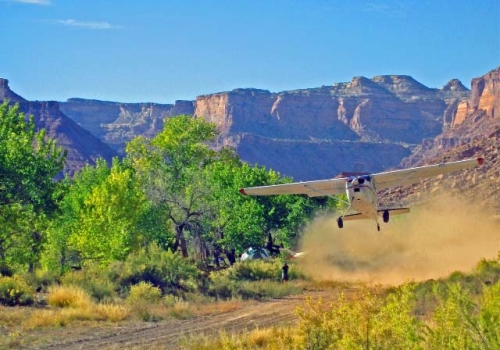
*Using an Airplane as a BOV*
An airplane can make a great BOV. My airplane is an old Cessna 206. It is a 6 person airplane but works well for carrying my family of four and gear. I use it for traveling, where it's often more economical than buying 4 airline tickets, and for recreation by taking the whole family airplane camping. Although it's never been put to use as a BOV during an actual emergency, practice drills show it will work well if the need ever arises. I keep it fueled with about 70 gallons of gas and ready to go. It can take me, my family, and a selection of gear about 1,000 miles away and only needs about a 1,000 ft. section of dirt road or relatively smooth field to safely land. It has the advantage of going far and fast while being safely out of reach of any chaos below... but it has some serious disadvantages too.

Advantages:
Most airplanes go faster than the average BOV, allowing you to get to your destination faster. My airplane flies at about 150 mph. It's also able to fly in a direct line to most destinations, unlike roads that twist and turn or otherwise do not head directly to your destination.
Traffic Jams are not as much of an issue. While the roads may be blocked with tons of traffic, accidents, and vehicles that have run out of gas, I can fly over them without even slowing down.
Airplanes have a longer range than most BOVs. Depending on winds my airplane can go about 1,000 miles before needing to refuel, while my car can only go about 350 miles.
I can easily get to places where Ground Vehicles, or Boats, can't.
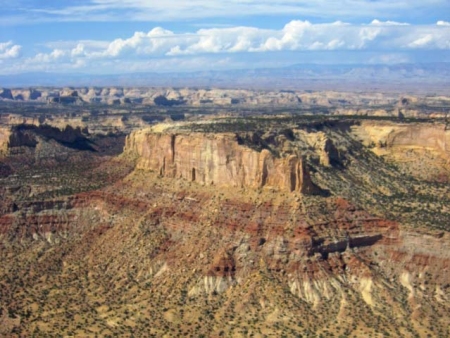
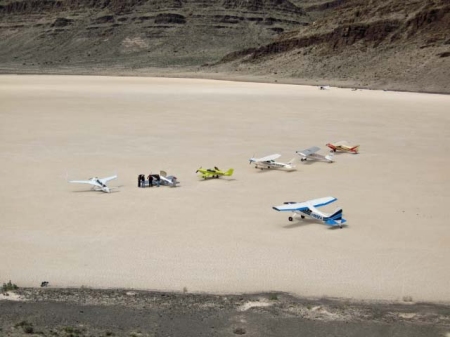
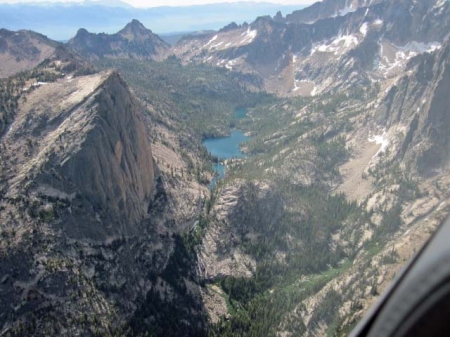
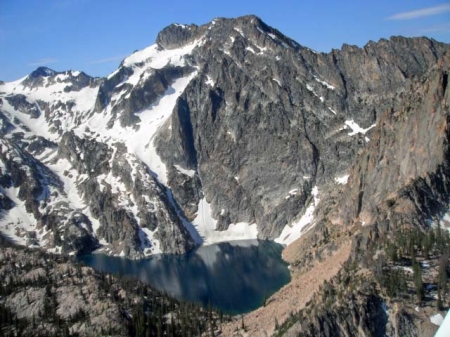
Given a few minutes to get rolling, ground vehicles can't threaten us, nor can they follow us for very long. Airplanes can be followed, and threatened, but it takes some pretty specialized equipment to do it.
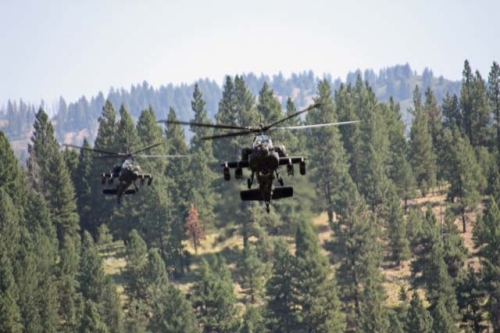
It's difficult to ambush an airplane, unless attackers have specifically set out to do so. You're not subject to being surprised at bridges, mountain passes, etc.
You can scout an area a long way in all directions before landing.
Most private airplanes are very EMP resistant. Although the navigation and communication gear has changed a lot in recent years and may not survive an EMP, the airplane and its engine is really very simple technology. Unlike modern automobiles the airplane's engine will start, and the airplane will fly, without any functioning electronic gear.
Disadvantages:
I am the only one in my family that can fly the airplane. If I am incapacitated my family will have to find another way to evacuate.
Most airplanes have at least a day or two per year when they are unavailable because of maintenance. My car has never been our of service for more than a few hours at a time in the past 10 years.
Although driving gets more hazardous in bad weather if the weather is bad enough it can be impossible to safely fly in a small airplane. I have had to cancel or delay many flights over the years because of weather. In a bug out situation I might have to spend a few hours or even a few days camping with the airplane before the weather improved enough to allow safe flight.
Airplanes are more expensive than most BOVs. An airplane that can carry four people will cost $25,000 and up. One that can carry 6 people starts at around $70,000. Many people rent airplanes, or have some kind of partnership to help share the cost.
Most airplanes can not carry as much as land based vehicles. My airplane can only legally carry about 1,300 lbs of people fuel and gear. Depending on how far I want to go 300-600 lbs of that limit will be used up in fuel. A vehicle that is overloaded or pulling a trailer will have poor handling, acceleration and braking... An airplane that is overloaded very much will never get off the ground.
"But I'm not a Pilot..."
"But I'm not a pilot", you say. Well let me tell you a little about becoming a pilot. Without any experience, on your very first flight with a flight instructor, you will be flying the airplane. The flight instructor will perform all of the critical parts of the flight and will make sure you do not do anything dangerous, but you will be flying. After as few as 10 hours of instruction you will be cleared for solo flight. That means you get to fly the airplane without an instructor on board.
To find a list of flight schools near you do an internet search for "be a pilot". It takes as little as 40 hours of flight training to become a private pilot but most people take longer, and in fact, the average is 70 hrs. Recreational pilots who are limited to flying smaller airplanes can get their pilot's license in as few as 30 hours with an average of 44 hours. The cost varies depending on the type of pilot's license, and the type of airplane you choose to do your training in, but ranges from about $3,000-$8,000.
MountainMedic
www.alpharubicon.com
All materials at this site not otherwise credited are Copyright © 1996 - 2009 Trip Williams. All rights reserved. May be reproduced for personal use only. Use of any material contained herein is subject to stated terms or written permission.